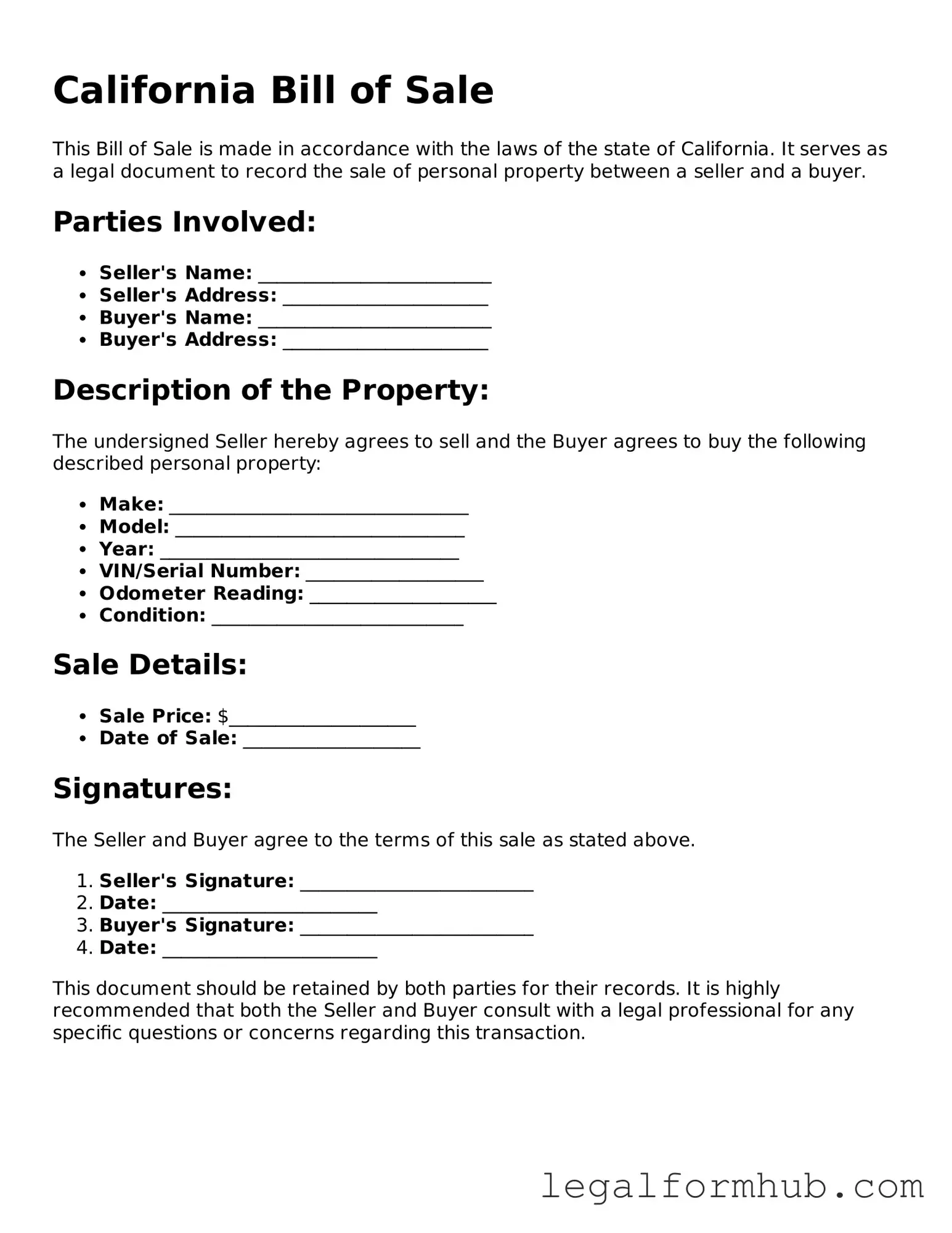The California Bill of Sale form is closely related to the purchase agreement, which serves as a contract between a buyer and a seller. This document outlines the terms of the sale, including the item being sold, the price, and the responsibilities of both parties. Unlike a bill of sale, which is often used for the transfer of ownership, a purchase agreement may include additional details such as payment terms, contingencies, and timelines for the transaction. Both documents are essential for ensuring that both parties understand their obligations and rights in the sale process.
Another document similar to the Bill of Sale is the title transfer document. This form is particularly important when dealing with vehicles or real estate. The title transfer serves to officially change ownership from the seller to the buyer. While the Bill of Sale provides proof of the transaction, the title transfer is necessary for legal recognition of ownership. In many cases, the title transfer must be submitted to a government agency, ensuring that the change of ownership is recorded properly.
For businesses looking to establish a clear operational framework, a thorough understanding of the Operating Agreement is imperative. This document, designed for limited liability companies (LLCs), provides essential guidelines and structure, ensuring clarity among members. An in-depth review of the comprehensive Operating Agreement details can aid in creating a robust foundation for your business.
The promissory note is yet another document that shares similarities with the Bill of Sale. This note is a written promise to pay a specified amount of money to a designated party under agreed-upon terms. When a buyer finances a purchase, a promissory note may accompany the Bill of Sale, outlining the payment structure and interest rates. While the Bill of Sale confirms the sale itself, the promissory note details the financial commitment involved in that sale.
A lease agreement also resembles the Bill of Sale in certain contexts, particularly when it comes to the rental of personal property. This document outlines the terms under which a lessee can use an item, such as a vehicle or equipment, without transferring ownership. While the Bill of Sale signifies a complete transfer of ownership, a lease agreement allows for temporary use while retaining ownership with the lessor. Both documents protect the rights of the parties involved, ensuring clarity in the transaction.
The warranty deed is another document that bears a resemblance to the Bill of Sale, particularly in real estate transactions. A warranty deed provides a guarantee from the seller that they hold clear title to the property and have the right to sell it. This document ensures that the buyer receives not only the property but also the assurance that no other claims exist against it. While a Bill of Sale may transfer personal property, a warranty deed serves a similar purpose in the realm of real property, ensuring legal protection for the buyer.
Lastly, the receipt is a simple yet vital document that can be compared to the Bill of Sale. A receipt acknowledges that payment has been made for a particular item or service. While a Bill of Sale serves as a more comprehensive record of the transaction, including details about the item and the parties involved, a receipt may simply confirm that a transaction occurred. Both documents provide proof of a sale, but the Bill of Sale offers more depth and legal significance in terms of ownership transfer.
